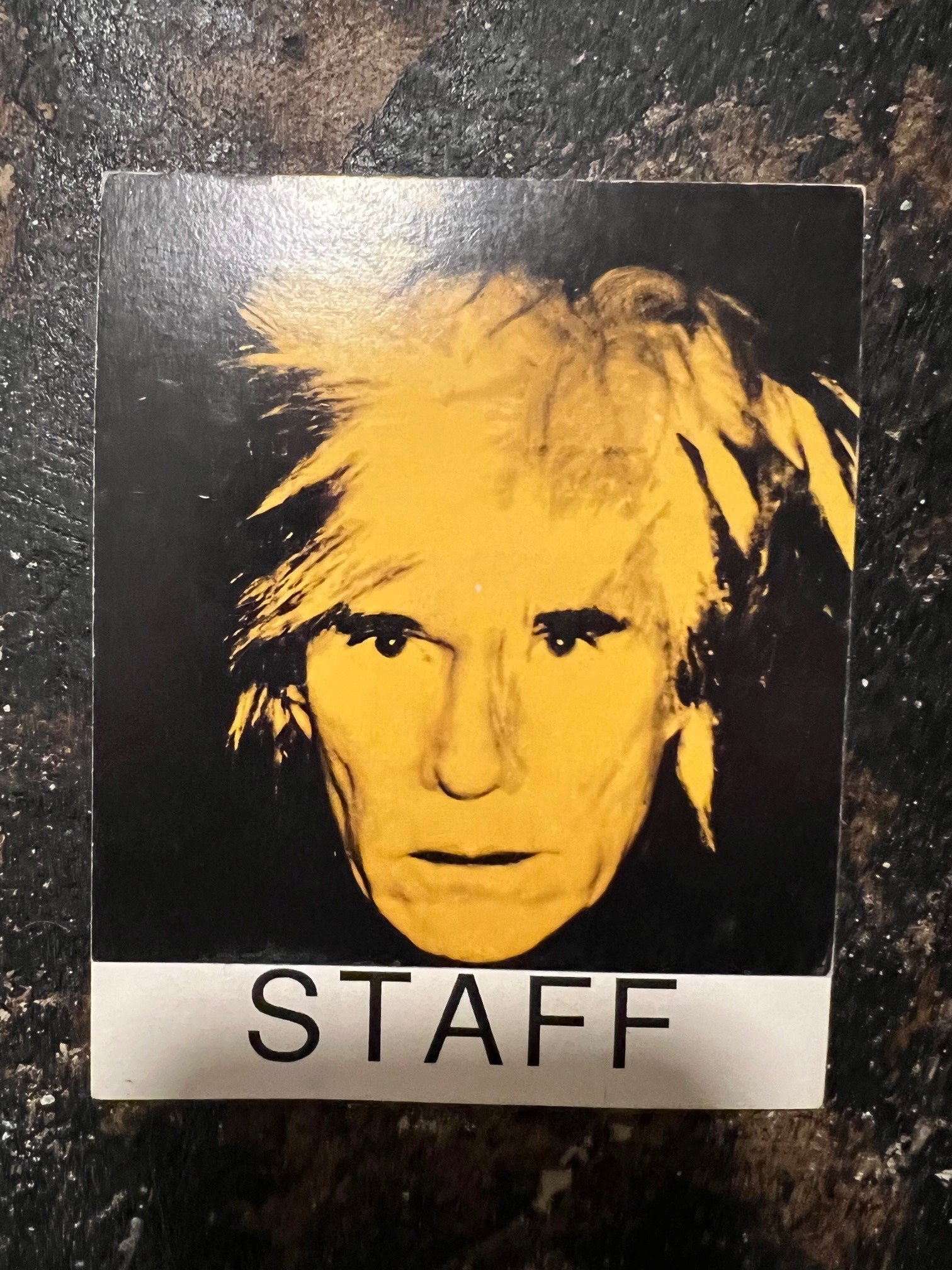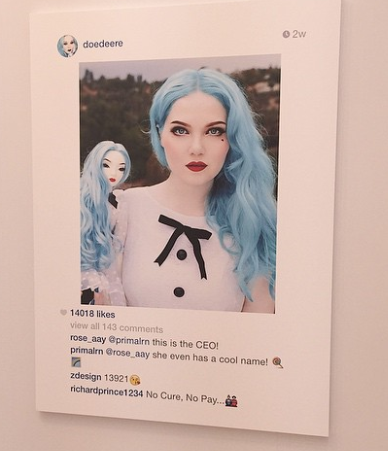Following the recent Supreme Court decision in Andy Warhol Foundation for the Visual Arts v. Goldsmith, I wrote an article in Apollo magazine discussing the result. The bottom line is that I continue to see the result as a sensibly practical one, that resets the over-reliance on a transformative test that had no limits in the execution. I also dislike the dissent more each time I read it.
New Article in Apollo magazine: The Supreme Court has saved the Andy Warhol Foundation from itself
Topics: Campbell v. Acuff Rose Music Inc., Supreme Court, Copyright, Fair Use, Andy Warhol Foundation for the Visual Arts, Apollo Magazine, Kagan, Lynn Goldsmith
Look to the Purpose, not the Meaning—Supreme Court Rejects Warhol Foundation’s Fair Use Defense Against Lynn Goldsmith
The Supreme Court of the United States has issued its long-awaited ruling in the dispute between photographer Lynn Goldsmith and the Andy Warhol Foundation for the Visual Arts (AWFVA) on May 18, 2023. The Court held the AWFVA’s delivery to Condé Nast magazine in 2016 of an Andy Warhol silkscreen from 1984 based on a 1981 Goldsmith photograph of the musician Prince did not satisfy the first factor (of four) of the statutory fair use elements. The Court took a narrow approach, explicitly declining to reach the question of whether Warhol’s original work would qualify for a fair use defense, holding only that the 2016 use did not.
(Williams College Museum of Art Security Badge, ca. 1993)
Topics: Cariou v. Prince, Copyright Act, Philippa Loengard, Campbell v. Acuff Rose Music Inc., Kernochan Center for Law Media and the Arts, 17 U.S.C. § 107, Columbia Law School, Andy Warhol, Fair Use, Andy Warhol Foundation for the Visual Arts, Syracuse University, Condé Nast, Kagan, Sotomayor, Roberts, Titian, Lynn Goldsmith, Vanity Fair, Thomas, Giorgione, Goya
Sullivan files Supreme Court Amicus Brief to Clarify Fair Use and Transformativeness in Warhol’s Use of Lynn Goldsmith’s Prince Photos
Sullivan has filed an amicus curiae (friend of the court) brief in the upcoming Supreme Court case Andy Warhol Foundation for the Visual Arts, Inc. v. Goldsmith. The brief was filed as counsel of record for copyright scholar Philippa S. Loengard, the Kernochan Center for Law, Media and the Arts at Columbia Law School. The case concerns the applicability of Section 107 of the Copyright Act, which permits as a fair use that would otherwise be copyright infringement—to a print made by Andy Warhol from a photograph of the musician Prince by photographer Lynn Goldsmith. In particular, the question presented to the Court addresses the implications of the Court’s holding nearly thirty years ago in Campbell v. Acuff-Rose Music, Inc., 510 U.S. 569, 579 (1994) that allowed for the possibility that a secondary use could be considered a fair use if it were sufficiently “transformative.” What exactly that means in the context of visual art has been a fraught—and at times incoherent—subject in recent years. Our brief explains that the Court should return the analysis of fair use to the four factors established by Congress. In the case of the first of the four factors, the Court should focus on the statutory language of the purpose and character of the works. By contrast, the inquiry into the meaning or message of the works advocated by the Warhol Foundation and the amici supporting it is a fool’s errand that provides no clarity and would render the copyright in photographs effectively unenforceable. This case is not a battle between Lynn Goldsmith and Andy Warhol; those artists proved entirely capable in 1984 of arranging the balance for themselves. It is a battle between a maximalist view by the Warhol Foundation that dismisses the value of photography as a creative medium at all.
Topics: Copyright Act, Roy Orbison, Toward a Fair Use Standard, Campbell v. Acuff Rose Music Inc., Kernochan Center for Law Media and the Arts, Philippa S. Loengard Esq., Columbia Law School, Prince, transformative, Andy Warhol, Fair Use, Andy Warhol Foundation for the Visual Arts, Condé Nast, People Magazine, The Time, 2 Live Crew, Death Valley, Velázquez, Rubens, King Philip IV of Spain, Las Meninas, Section 107, Billboard, Pierre N. Leval, “Oh, Pretty Woman”, Mickey Mouse
Here We Go Again? Richard Prince Sued By Photographer Over Images of Rastafarian in Instagram Show
A new year, a new Richard Prince appropriation and fair use dispute. Readers will recall both the controversial 2013 Second Circuit decision on Prince’s dispute with Patrick Cariou over the latter’s Yes, Rasta photographs that Prince altered, defaced, and otherwise rearranged for his Canal Zone series. Last year Prince raised the profile of this provocative exploration of the bounds of copyright with the high profile “Instagram” show in which he enlarged Instagram posts and sold them for north of $90,000 each. Prince has now been sued for copyright infringement by photographer Donald Graham, whose image was used in one of those works. Will this be more of the same, or will Prince suffer a reversal of fortune? Even adopting a liberal interpretation of the 2013 opinion, it looks from here like he may have a problem, but the final word will almost certainly not come for quite some time.
Topics: Cariou v. Prince, Richard Prince, Second Circuit, Instagram, Larry Gagosian, Fair Use, Rastafarians Patrick Cariou
Google Books, Fair Use, and Visual Art—Second Circuit Writes Decision That Would Have Helped Two Years Ago
With much anticipation, the Second Circuit issued its opinion last week in the Google Books case (Authors Guild et al. v. Google, Inc.), brought by authors Jim Bouton (of Ball Four fame) and others against Google for the latter’s program of scanning millions of library books, whether or not those books are in the public domain. My overwhelming reaction to the opinion, however, in the realm of visual art, is what a lost opportunity the Prince v. Cariou decision was two years ago, and some optimism that the most recent decision will start to provide useful guidance for practitioners that has been harder to give with confidence since Prince. After two years of the preeminence of the first fair use factor threatening to dwarf everything with a “transformativeness” test that essentially any use could meet, Google Books (even while finding a fair use) restores some balance to that analysis.
Topics: Richard Prince, Campbell v. Acuff-Rose Music, Hildebrand Gurlitt, 510 U.S. 569, Teenage Mutant Ninja Turtle, Prince v. Cariou, Second Circuit, Canal Zone, Patrick Cariou, Toward a Fair Use Standard, Michelangelo, Suicide Girls, Inc., Google Books, The Legal Guide for Museum Professionals, Pierre Laval, Jim Bouton, Copyright, transformativeness, Fair Use, Nazi-Looted Art: Risks and Best Practices for Muse
Anish Kapoor Sculpture Dispute Tests the Legal Utility of Terms Like Plagiarism and Appropriation
A sculpture in China that is remarkably similar to Anish Kapoor’s famous Cloud Gate in Chicago is highlighting how the colloquial use of words like appropriation and plagiarism, while useful and descriptive to distinguishing the creative process, can often confuse the issue when it comes to sorting out the parties’ legal rights. While the opinion here is that Kapoor has a good case for infringement (Cloud Gate-gate?), it is not the idea of plagiarism that would support his claim.
Topics: Donn Zaretsky, Xinjiang, Infringement, Pressure, SuicideGirls, Foreign Sovereign Immunities Act, Freddie Mercury, Rahm Emmanuel, Ma Jun, Chicago Sun Times, Ice Ice Baby, David Bowie, FSIA, Karamay, Copyright, Cloud Gate, Millennium Park, The Art Law Blog, Anish Kapoor, Plagiarism, Fair Use
Free Brady!—Did Governor Baker’s T-Shirt Have a Copyright Problem?
Tom Brady will be in New York today at a hearing in the litigation over his 4-game suspension by Roger Goodell for allegedly being “generally aware” of the deflation of footballs in the AFC Championship thrashing of the Indianapolis Colts last winter. For good legal analysis of the absolute fiasco that is the NFL’s attempt at a middle-school science project (instigated by the condition of a football introduced from the opposing team—but congratulations on another AFC Finalist banner) and the resulting adjudicatory process, I suggest John Dowd’s blog (“The NFL's investigation of and rules against Tom Brady are a travesty, and they've resulted in uncalled-for penalties. And it's all based on a report that lacks basic integrity, fairness and credibility.”). Dowd is an experienced federal prosecutor and led the investigation, among others, into Pete Rose and gambling for Major League Baseball. Most notably, he was sufficiently offended by the whole exercise to take the issue up with no relationship to the parties. Mike Florio at ProFootballTalk and Steph Stradley have also covered the story well.
Topics: Left Shark, ProFootballTalk, ALS. Metro, Copyright Act, Pete Frates, David Portnoy, Indianapolis Colts, AFC Championship, Free Brady, Mike Florio, Barstool Sports, Jacqueline Kennedy, John Dowd, Ice Bucket Challenge, Shepard Fairey, Major League Baseball, Copyright, Roger Goodell, Senator Obama, Hope, AFC Finalist, Andy Warhol, Tom Brady, Charlie Baker, Massachusetts Governor, Fair Use
Shepard Fairey Wanted on Vandalism Charge for Street Art in Detroit—Will This be the VARA Test Case?
Detroit police have issued a warrant for well-known artist Shepard Fairey in connection with his recent visit to the city, on suspicion of vandalism. While Fairey was apparently in Detroit to paint a commissioned mural at One Campus Martius, he told the Detroit Free Press, “I still do stuff on the street without permission. I'll be doing stuff on the street when I'm in Detroit.” According to the Free Press:
Topics: Richard Prince, Jeff Koons, Patrick Cariou, Moral Rights, Andre the Giant, Graffiti Art, Visual Artists Rights Act of 1990, Barack Obama, One Campus Martius, Banksy Does New York, VARA, Banksy, Shepard Fairey, appropriation copyright, Copyright, 5Pointz, Hope, Detroit Free Press, Associated Press, Fair Use
Richard Prince, Social Media and the Public Domain: Reports of Copyright’s Demise are Premature
Reactions to the Richard Prince Instagram story continue to filter in, and highlight the perpetual confusion between what is publicly available and what is in the public domain. They are not the same thing, with important legal consequences.
Topics: Richard Prince, Missy, Copyright Act, Prince v. Cariou, Canal Zone, Patrick Cariou, Suicide Girls, vulture.com, Yes Rasta, 17 U.S.C. § 107, Jerry Saltz, Instagram, Copyright, transformativeness, Fair Use, ArtNet, New York Magazine, § 107
Fair Use Fool me Twice, Shame on Me—Richard Prince Goes Trolling on Instagram But May Have a More Pedestrian Problem
Few art law cases have received as much attention as that of Richard Prince and his dispute with Patrick Cariou over the latter’s Yes, Rasta photographs that Prince altered, defaced, and otherwise rearranged for his Canal Zone series. Prince has now garnered renewed attention for his appropriation of Instagram images in a set of works he has been selling at a Gagosian Gallery show called “New Portraits" (and in various other venues over the last few months). He escaped liability for infringement of Cariou’s pictures (though the case settled after remand; several infringement claims were still in play when the parties settled). Can he do so again? If this recent effort is not infringement, it certainly begs the question of whether the fair use exception has swallowed the rule. Lastly, Instagram itself may have prohibited the entire exercise in its terms of use, a possible avenue to short-circuit the entire copyright exercise.
Topics: Richard Prince, Copyright Act, DoeDeere, 2LiveCrew, Prince v. Cariou, Roy Orbison, Canal Zone, Patrick Cariou, Internet, Yes Rasta, 17 U.S.C. § 107, Instagram, Copyright, Gagosian Gallery, transformativeness, Fair Use, § 107







